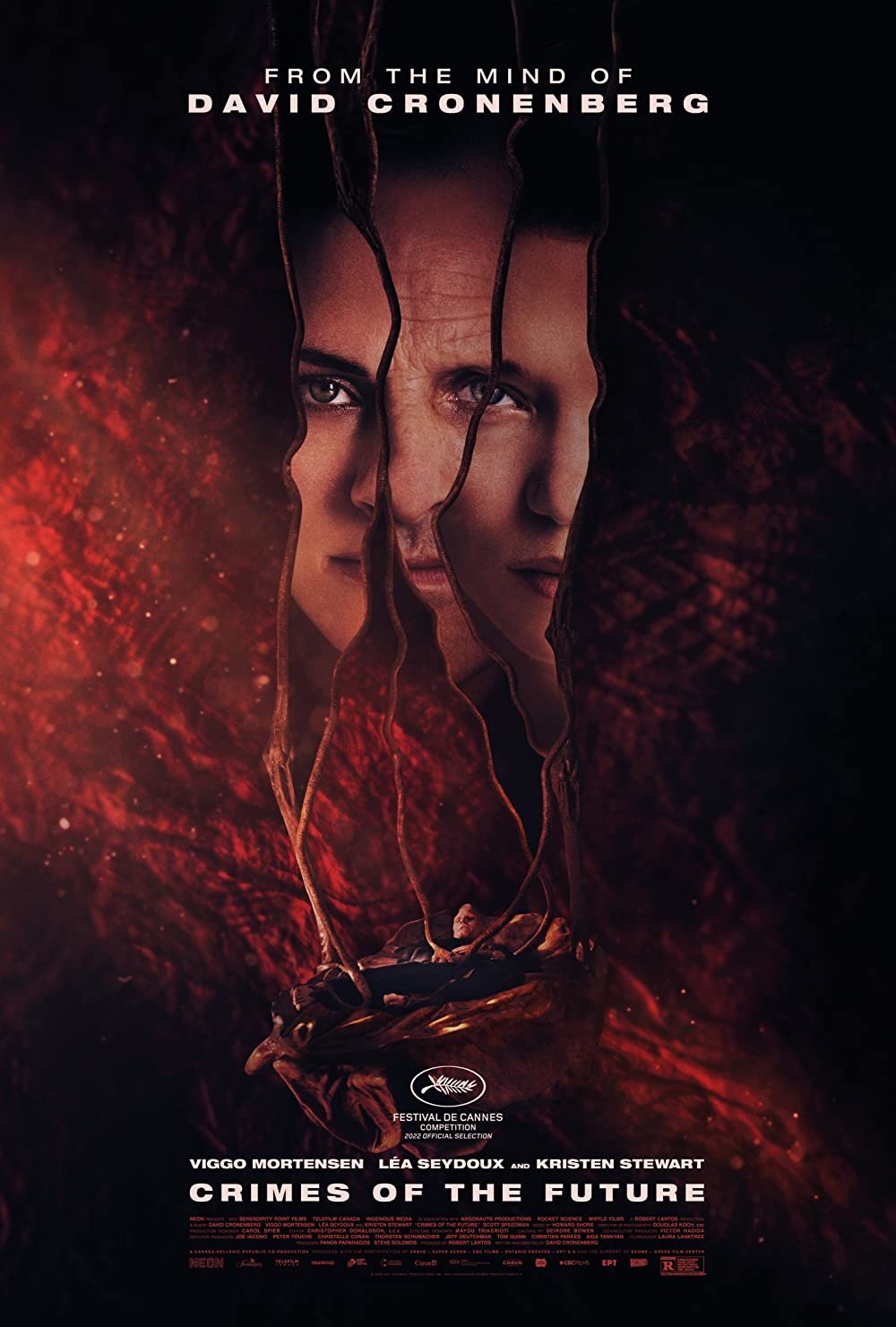Dir: David Cronenberg
Starring: Viggo Mortensen, Léa Seydoux, Kristen Stewart, and Scott Speedman
1h 47m
The cinematic work of director David Cronenberg can horrify as much as it can intrigue, sometimes separately but often at the same time, pulling viewers through an array of imagery and emotions during the journey. Cronenberg is one of few directors to defy genre expectations with nearly every film composed. The straightforward definition for the auteur’s work would be horror, and with the festering wounds, gruesome body metamorphosis, and exploding heads, it wouldn’t be a wrong classification. However, underneath the horror is a filmmaker using the genre to explore deeper themes surrounding sex, violence, humanity, and evolution in physical and psychological ways.
“Crimes of the Future” is an interesting film, a balancing act of the provocative imagery and thought-provoking themes that have defined David Cronenberg’s career. At its core, the film explores the question, “what are we growing into?” The examination of the human condition because of the forces pulling, pushing, and sometimes plunging into the bodies and minds of humans has always been on Cronenberg’s mind. In “Crimes of the Future,” people continue to evolve and mutate more curious, corrupted, and complicated. Using a subtle touch, Cronenberg curates a film with simple questions that yield complex answers.
Saul Tenser (Viggo Mortensen) is a celebrity performance artist who, with surgical assistance from his partner Caprice (Léa Seydoux), performs public showcases to display the metamorphosis of his internal organs. Saul rests within a mechanical structure that looks wrapped in pink flesh during one performance art exhibition. Caprice utilizes a pulsing controller with flashing lights to conduct the surgery; Saul’s reaction during the procedure is one of pleasure, an ecstasy in every facial expression.
The distant future in “Crimes of the Future” is a wasteland. The world is depleted of resources, decay is rampant in every structure, and violence lingers in the dark corners of the streets. Humanity wanders the city, medicated with foreign substances and conducting self-gratifying acts of disfigurement to cope with the reality they are responsible for creating. Cronenberg maintains a frightening look at the future world here, never shying from the negative progression no matter how dark they become. It’s reflective of the characters in the film, all of whom have grown to survive the devastated and devolved world.
Saul’s evolution, with an immunity to disease and infection that allows his open wounds accessible entrance and exit, promotes the growth of organs that place him in varying degrees of discomfort and distress. This internal transformation intrigues an investigator, an amusing take from Kristen Stewart, who works for the National Organ Registry. From this point, the film finds a familiar path with Cronenberg’s past works, “Videodrome” and “Scanners” being the most prominent examples, but not as aggressive or sensationalized. “Crimes of the Future” finds a subtler approach that lingers and haunts rather than becomes a full-tilt horror show.
Cronenberg deftly handles the composition of characters throughout the film, imbuing them with feelings that evoke odd compassion for their journey, one that feels doomed from their introduction. Mortensen and Seydoux have lovely chemistry, specifically during the strangest moments in the film. Both actors commit entirely to the character motivations throughout; their performances hold the film together.
“Crimes of the Future” may not evoke the same horror sensations of David Cronenberg’s past, but that doesn’t keep it from being any less affecting. It should be noted that the film opens with a shocking death scene involving a child; it’s a bleak and startling way, warning to open a movie. Still, it’s not often that you encounter a film as challenging as this on the big screen. While some elements don’t connect in meaningful ways, in the hands of David Cronenberg, the experience is nonetheless intriguing.
Monte’s Rating
3.75 out of 5.00











